Kids with heart defects joined forces with Jackie Kennedy, LBJ to raise awareness
By American Heart Association News
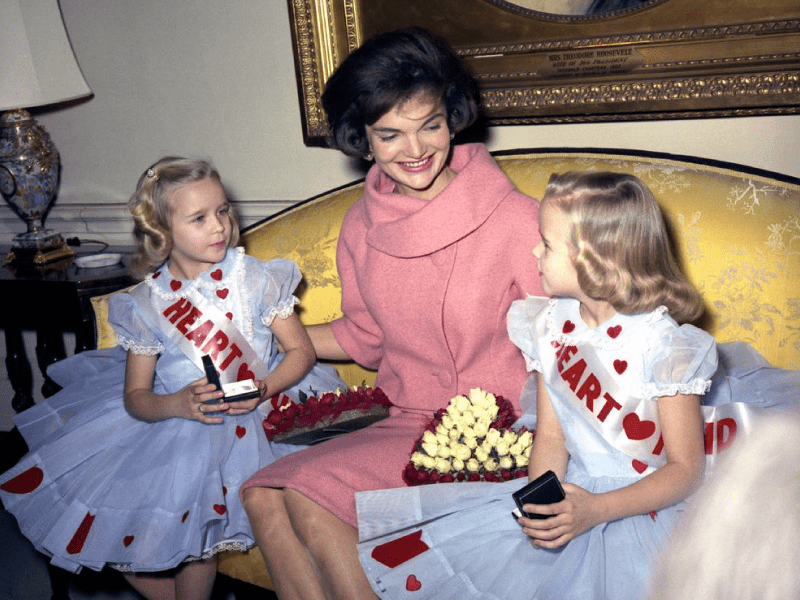
On Feb. 1, 1961, twins Debbie and Donna Horst arrived at the White House to fanfare. The 6-year-olds, decked out in fancy dresses and satin sashes, found themselves surrounded by a pressing crowd and a sea of blinding flashbulbs as they made their way to see Jacqueline Kennedy.
The girls — both born with holes in their aortas — were meeting with the first lady to kick off a national campaign to raise awareness about congenital heart defects.
"There were hundreds of reporters because this was Jacqueline Kennedy's first public act as first lady," Debbie said. She recalls being startled when the reporters asked Kennedy if they could move in closer. "It was frightening because they all jumped at us at once."
The Pennsylvania twins, just a few weeks from turning 7, were among the first "Heart Fund Sweethearts" in the campaign to raise money as well as awareness. The month before, they'd met up with Micki and Patricia Gane, also of Pennsylvania, and Jackie and Jeri Pelletieri of New Jersey, at the U.S. Capitol Building. All but one of the six were born with a hole in their heart — at the time, a devastating diagnosis.
More than 50 years later, the four surviving Sweethearts shared their unforgettable childhood stories — as well as details about their lives since — with American Heart Association News as part of American Heart Month.
Debbie and Donna
When Debbie and Donna were born in 1954 in Cheltenham, Pennsylvania, they experienced seizures and turned blue, leading doctors to conclude they each had a hole in their aortas. The hole is supposed to close before birth. Otherwise, getting enough oxygen to the blood is a problem.
The condition could be repaired with surgery at age 5.
"Sixty years ago, it was major surgery," Debbie said. "We didn't go to kindergarten, because of a risk of infection from the other kids."
After their surgeries in 1959, the girls' parents were asked if the girls could be "poster sweethearts" for an American Heart Association campaign about congenital heart defects. Although memories and records are fuzzy about specifically why they were selected, what came next was quite memorable.
Fast-forward to that February day in 1961. President John F. Kennedy's inauguration was just 12 days before, and the press was clamoring to capture the first lady's first public act. Debbie and Donna remember being escorted into her office amid the chaos.
"She was so soft-spoken and kind," Debbie recalled. "She asked my mom how to tell us apart, and she told Mrs. Kennedy the story of me cutting my own hair in the front, so mine was a little shorter than Donna's."
The girls gave the first lady a gift of heart-shaped flowers and dolls wearing the same dresses they wore — baby blue with red hearts — to give to her daughter, Caroline. Kennedy gave Debbie and Donna heart charms with her initials and their initials.
"I still have that charm today on my charm bracelet," Debbie said.
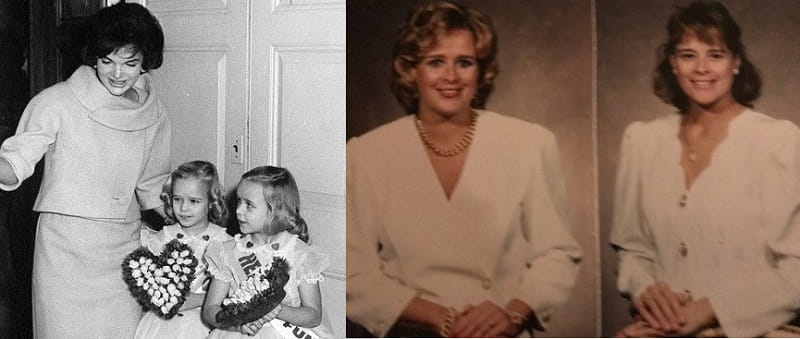
"Heart Sunday" was a few weeks later. That was a day when AHA volunteers would call on their neighbors for contributions to the Heart Fund, a fundraising effort that began in 1949. Over the years, Debbie and Donna made appearances for the Heart Fund, traveling by train or car since their mom didn't like to fly.
Today, Debbie's a medical receptionist in Yardley, Pennsylvania, and is married to her high school sweetheart, John Deeney. They have three children and five grandchildren.
Donna eventually married, and she and her husband, Lenny Jachimowicz, had two children, Nicole and Raymond. The family lived in Virginia when Donna died from cardiac arrest in 1998 at age 44. It wasn't related to her congenital heart defect, but it was rooted in an undiagnosed heart problem, Debbie said.
"When I lost Donna, it was like I lost my right arm," Debbie said. "But I have a lot of faith in God."
Patricia and Micki
Patricia, whose last name is now Olekszyk, was the only one of the six Sweethearts with a normally functioning heart. But she was very involved in the world of heart disease.
"When your sibling, especially a twin, is going through something this impactful, you feel it almost as much," Patricia said.
But Micki's words, captured in a speech a few years ago, describe what it was like.
"I was called a 'blue baby' as a toddler because I frequently had blue lips and fingertips. I couldn't keep up with my sister," Micki said. "She would run up the stairs and I would try to run after her, but I just couldn't. I would sit there on the bottom level of the steps and fall asleep."
That changed after Micki had surgery at age 5. The hospital stay was long — four months. But when she got out, she had energy to spare, jumping fearlessly in piles of leaves, Patricia recalled.
"She was no longer a blue baby," Patricia said.
The illness made a strong impact on their family, spurring their mom, Anna Marie Gane, to become an active AHA volunteer in their hometown of Aldan, Pennsylvania.
"She canvassed the neighborhood telling whoever would listen about heart disease," Patricia said. "She didn't want another parent to see their child endure something like this."
That activism eventually led to the girls becoming Sweethearts. While only Debbie and Donna met Jacqueline Kennedy, all six girls visited the U.S. Capitol and met then-Vice President Lyndon B. Johnson.
"He saw what all of these little girls were going through, and what their families were going through, and I guess he just couldn't let it go overlooked," Patricia said.
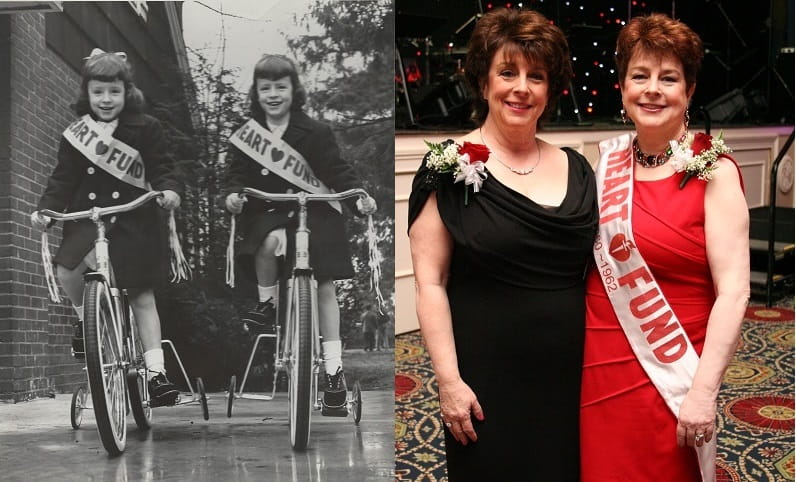
Over the years, the girls balanced each other out — quiet and shy Patricia and Micki, the life of the party. Today, Patricia is married with a 29-year-old son. She teaches karate and self-defense and is the Delaware state champion for powerlifting and bench press for her age group.
Micki eventually married Jim Gaffney. She was a fan of Scottish country dancing and raising funds for projects she cared about, such as heart health. But Micki struggled with health problems. She suffered from chronic pain after a car accident and died in her sleep in 2016.
Patricia fondly recalls her "mirror twin" — and the way they complemented each other perfectly.
"I miss her, but at the same time, I feel like she never left," Patricia said.
Jackie and Jeri
Jackie and Jeri were well-known in their town of Milton, New Jersey, even before they went to Washington.
In addition to all the concerns about their condition and the upcoming surgery, their family was trying to rally their hometown to make sure they had enough blood for the procedure. They needed 48 pints of rare O-negative. Ads were placed in the local newspaper. One headline proclaimed, "100 donors helped twins facing knife."
Their mom's reaction matched the headline's drama — she was terrified.
So, she told the 5-year-old girls they were just getting their tonsils out. The girls survived the lie, the surgery and long stints cooped up at the hospital and home. From their kitchen cots, Jackie and Jeri "operated" on their dolls, crayoning scars down the plastic chests.
"Jeri's the quiet one," Jackie said. "I was the one who would beat people up on the way to the principal's office."
When they went to Washington in 1961, they, too, met Johnson. A photo famously shows all the Sweethearts circling him while he clutched a large heart made of flowers. They recall his kindness and the letters he sent afterward; he said meeting them had been good for his heart.
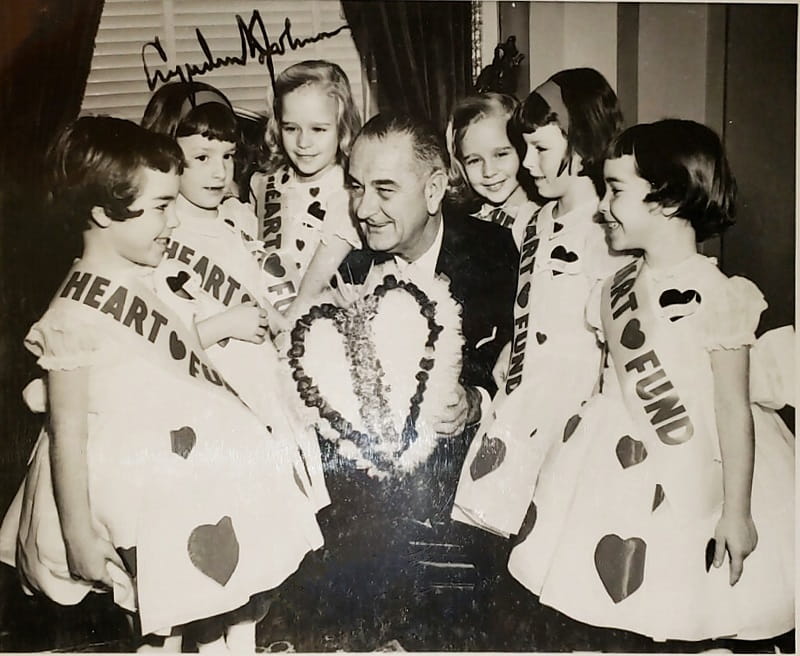
Just a few years later, in 1964, Johnson would issue the first-ever national proclamation declaring February as American Heart Month to raise national awareness about heart disease. The tradition has continued ever since.
Today the sisters both live in Milton. Jackie Meller is retired after many years of waitressing. She has been married 23 years and has three children and five grandchildren. Jeri Wyse is a board assembler for Hubble, where she's worked for 40 years.
The family has seen some health scares. Twelve years ago, Jeri needed a stent. Eight years later, a quivering heartbeat required treatment.
More recently, a cousin's young son had surgery for a hole in his heart. His hospital stay was a few days, and Jeri couldn't help but to note how much less fuss and drama there was compared to her day.
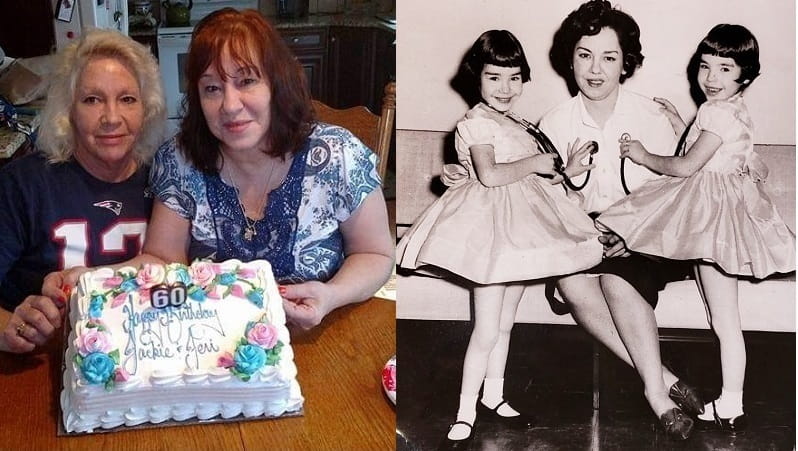
Heart disease was the No. 1 cause of death in the United States during the Kennedy administration, and it's the No. 1 cause today.
But thanks to advances in research and technology, the condition the twins were born with is much better understood. Today, if a hole in the heart doesn't go away on its own, and if it's small enough, it typically can be closed with a simpler procedure with an easier recovery.
"It's amazing what they can do for your heart today," Jeri said.
If you have questions or comments about this story, please email [email protected].




